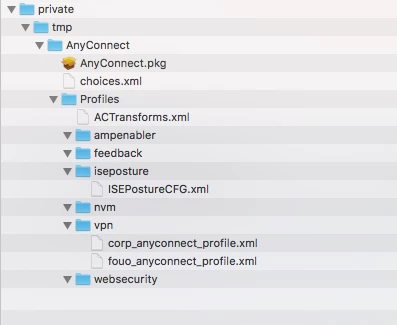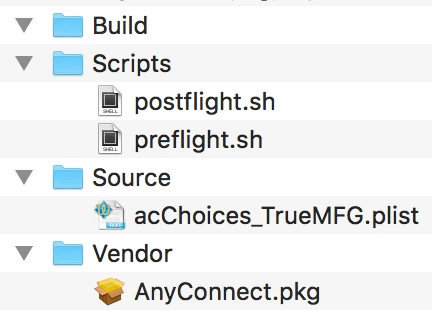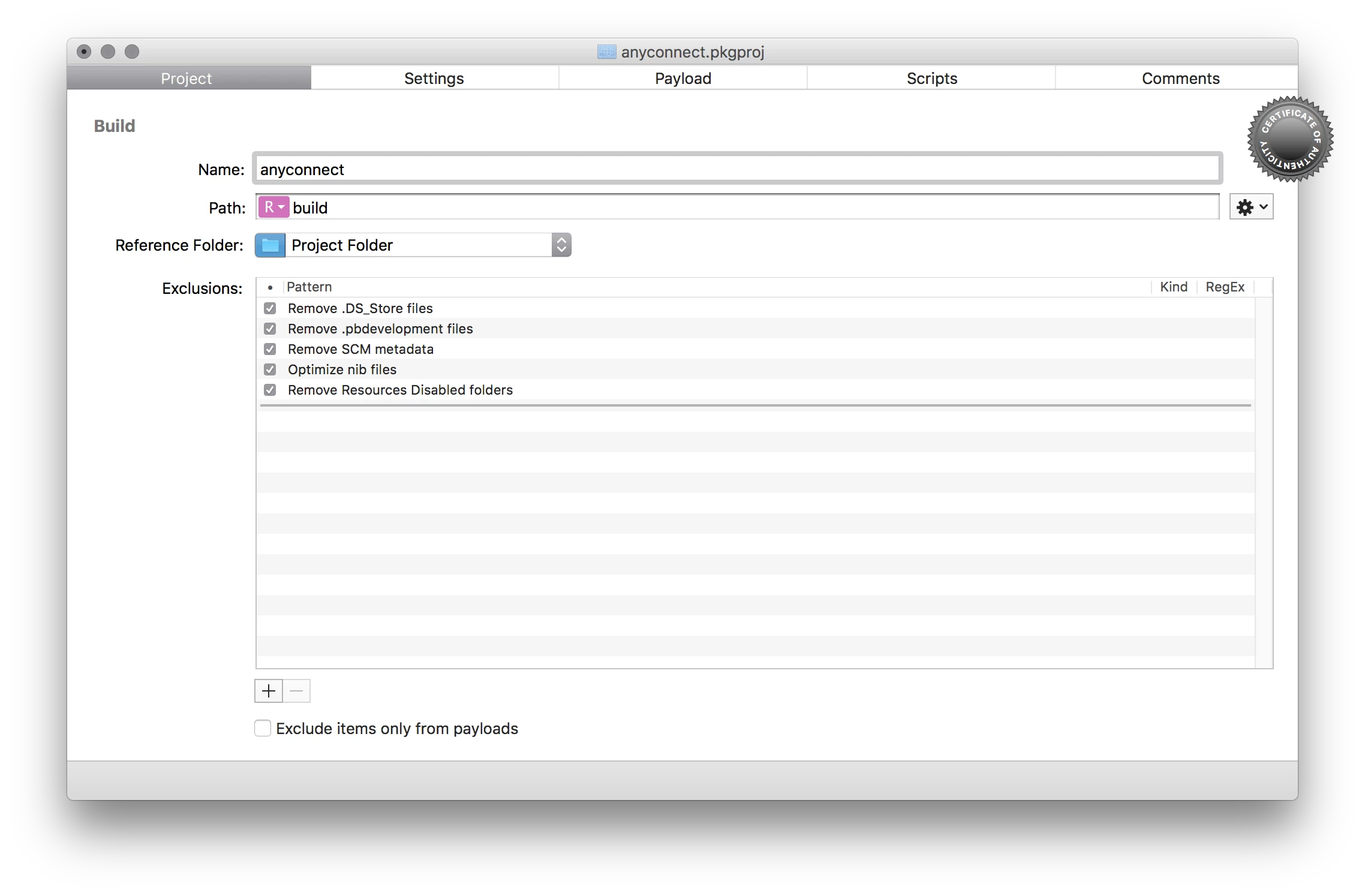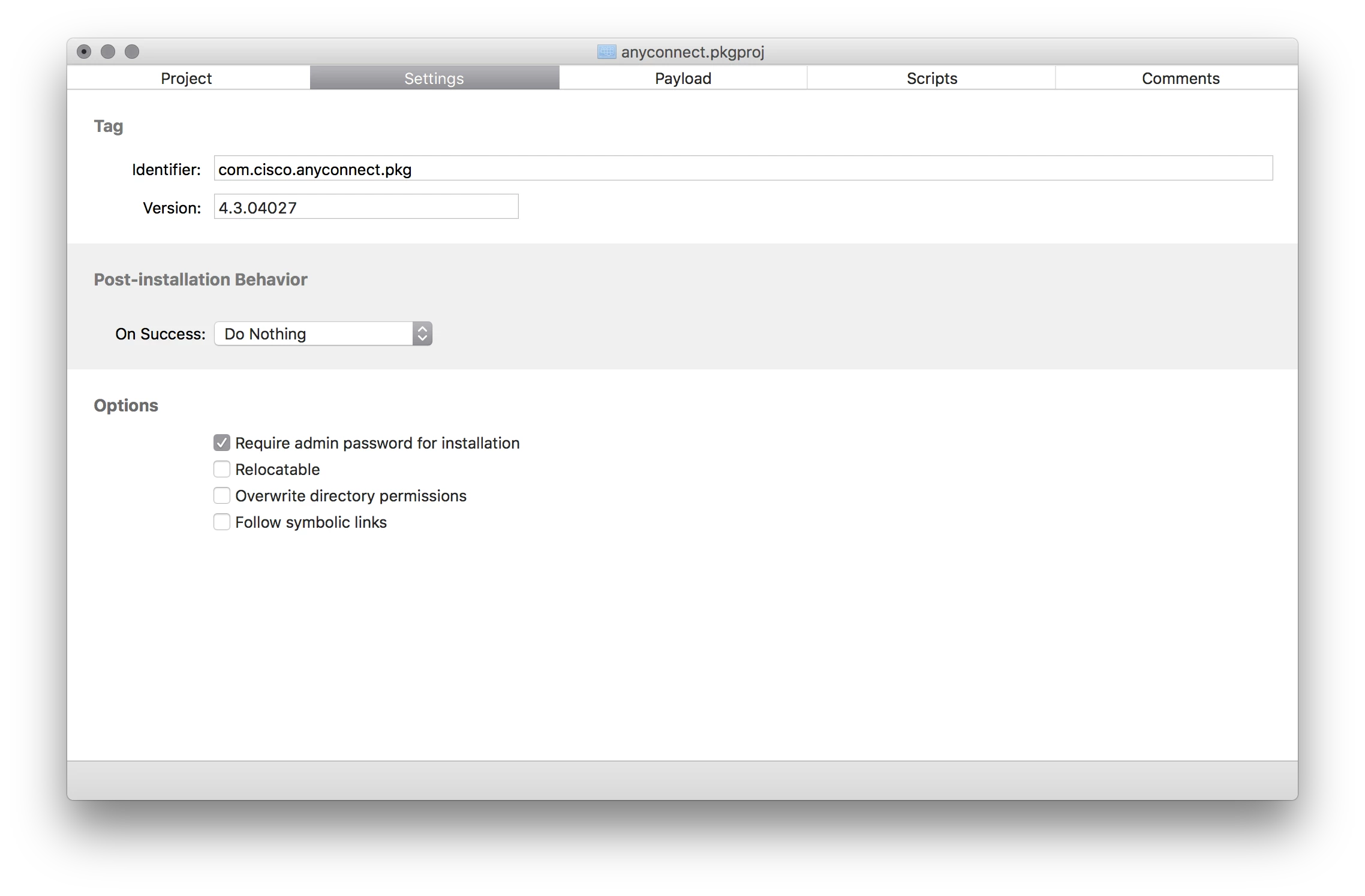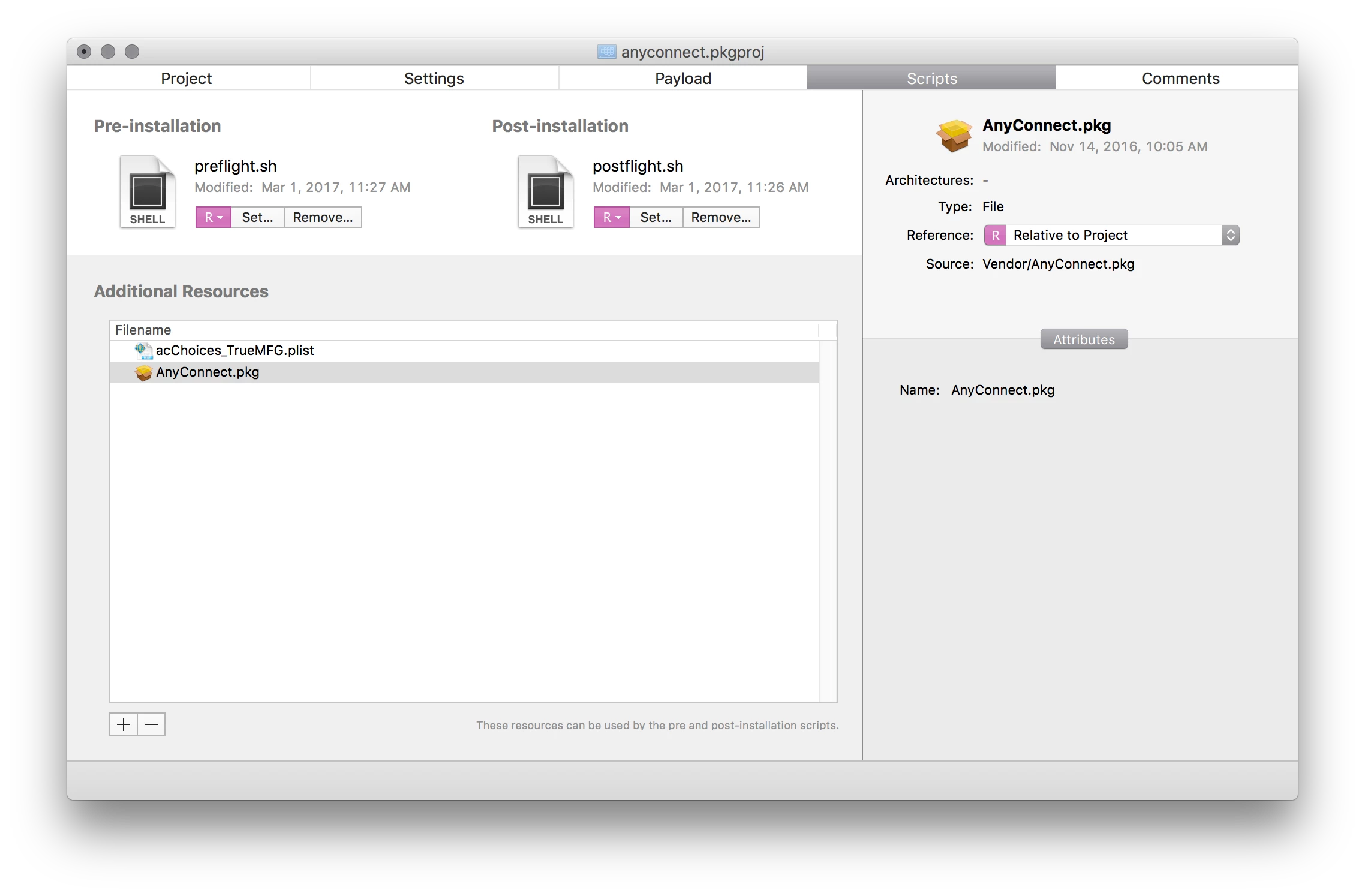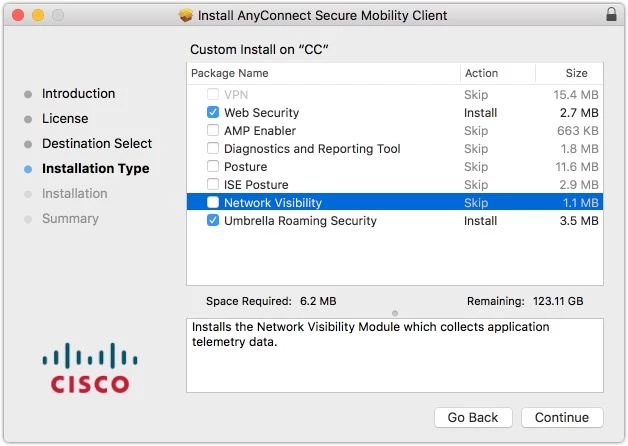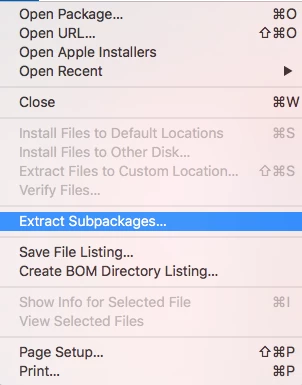I have created a custom .pkg for Cisco AnyConnect. It seems that after install the service isn't running so you have to reboot for the vpn to work. Can I make this as a post install script with composer and what service would that be?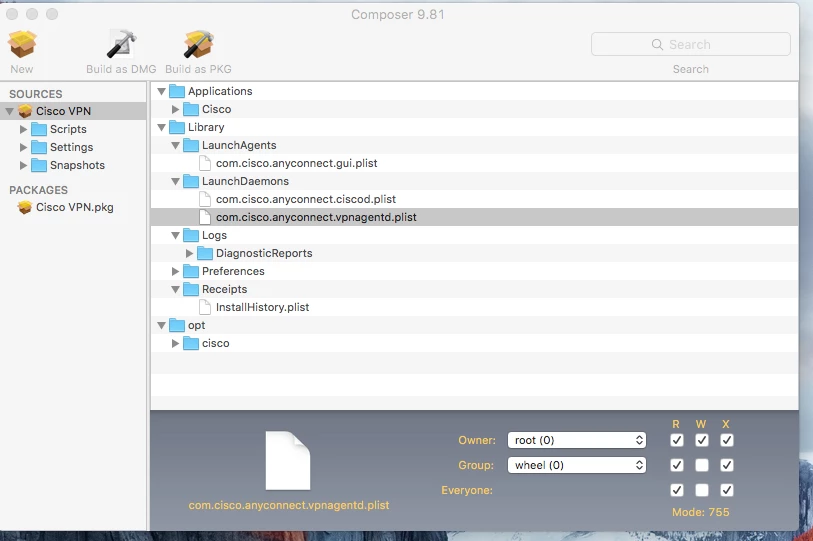
Enter your E-mail address. We'll send you an e-mail with instructions to reset your password.




